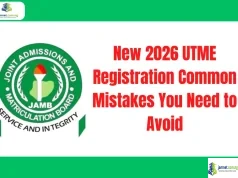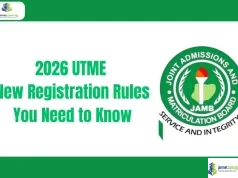Learn how to use the Feynman Study Technique to master any subject. This simple four-step guide will help you understand concepts deeply, identify knowledge gaps, and pass your exams with confidence.


Have you ever spent hours reading a textbook or listening to a lecture only to find that you have no idea what you just learned? You are not alone. Many students fall into the trap of passive learning, but there is a powerful and simple solution: the Feynman Technique.

Join our Telegram Channel for Instant Scholarship Updates
Named after Nobel Prize-winning physicist Richard Feynman, this method is a mental model for learning anything faster and more deeply. Its core principle is brutally simple: if you cannot explain a concept in simple terms, you do not understand it well enough.
This technique turns you from a passive consumer of information into an active teacher, which is one of the most effective ways to learn and truly master a subject.
What is the Feynman Technique?
The Feynman Technique is an incredibly effective learning process that forces you to engage with a topic on a deeper level. It is a four-step process that can be used on any subject, from complex physics equations to historical events. It pushes you to move beyond simple memorization and build a real, intuitive understanding.
The beauty of this technique is its simplicity; it doesn’t require any special tools or software—just your brain, a pen, and a piece of paper. This method has been scientifically proven to work because it activates multiple cognitive processes, making learning more efficient and effective. It’s a method that works for students of all ages and across all disciplines because it focuses on the fundamental principles of true understanding.
The Four-Step Process
Here is the step-by-step guide to applying this technique to your study routine. All you need is a blank notebook or a piece of paper and a pen.
1. Choose a Concept
Start by selecting the specific topic you want to understand. This can be anything from a broad subject like “photosynthesis” to a specific idea like “the Doppler effect.” Write the name of the concept at the top of a blank page. The more specific you are, the more focused your learning will be. Instead of just “biology,” pick “the Krebs cycle” or “DNA replication.” This first step is a form of goal-setting; it clearly defines what you are setting out to learn.
2. Teach it to a Child
On the page, write down everything you know about the concept as if you were explaining it to a child. Use simple, clear language. Avoid jargon and complex terminology. Instead, use analogies and metaphors to make the idea accessible. This step forces you to move away from rote memorization and towards a genuine, simple explanation. The act of simplification is where the real learning happens. It forces you to think about the core essence of the concept and strip away any non-essential details. If you can explain the concept using a real-world example, you have a much better grasp of it.
For example, when explaining how the heart pumps blood, you might use the analogy of a water pump in a house or a car engine. The simpler your language, the more confident you can be in your understanding.
3. Identify Your Gaps
This is the most critical step. As you are writing or speaking, you will inevitably hit a point where you get stuck. You will realize that you cannot explain a certain part simply, or you will find yourself using jargon without truly understanding it. These are your knowledge gaps.
This is not a failure; it is a moment of clarity. These gaps are the most important part of the learning process because they show you exactly where to focus your effort. It prevents you from wasting time on what you already know and directs you to the areas where you need to improve. Go back to your source material (textbook, lecture notes, video) and review only the parts you struggled with. Do not move on until you can explain that confusing part in simple terms. This targeted approach is far more efficient than re-reading an entire chapter.
4. Simplify and Review
Once you have filled in all your knowledge gaps, review your written explanation. Read it out loud. Does it flow? Is it easy to understand? Can you make it even simpler? If it still sounds confusing, repeat the process. The goal is to create a clear, elegant explanation that even a child could grasp. This final step solidifies your understanding by creating a cohesive, well-organized mental model. By refining your explanation, you are strengthening the neural connections in your brain, which makes the information much easier to retrieve during a high-pressure exam. The act of refining and simplifying is what transforms the information from a temporary collection of facts into a permanent part of your knowledge base.
Why It Works: The Science Behind the Technique
The effectiveness of the Feynman Technique is rooted in several key cognitive principles:
- Active Recall: Unlike passive reading or highlighting, this method forces you to retrieve information from your memory without looking at your notes. This process of active recall is one of the most powerful ways to strengthen memory and cement knowledge. Each time you actively recall a piece of information, you are reinforcing the neural pathways associated with that memory, making it more robust and less susceptible to forgetting. This is why this method is far superior to simply re-reading your notes.
- Identifying Knowledge Gaps: The technique ruthlessly exposes what you do not know. It is easy to fool yourself into thinking you understand something when you are just passively reading, but the act of explaining forces you to confront your weak points. By pinpointing these gaps, you can focus your efforts on the areas that need the most attention. This targeted approach saves a significant amount of time and effort, making your study sessions much more efficient. It also helps you build a solid foundation of understanding, preventing future confusion.
- Simplification: By forcing you to use simple language, it helps you identify the core principles of a concept. You cannot simplify something you do not understand. This process transforms information from a collection of facts into a coherent mental model. This simplification process is a form of deep learning; it helps you to see the big picture and understand the relationships between different concepts. The ability to simplify a complex topic is a sign of true mastery.
- Creating Analogies: The need to create simple explanations often leads to creating analogies and metaphors. These connections make the information more meaningful and easier to retrieve later, especially during a high-pressure exam. Analogies act as mental shortcuts, allowing you to access a complex idea by relating it to a familiar concept. This not only aids in memory but also helps you to apply the knowledge to new and unfamiliar problems.
Practical Tips for Students
- Use a Whiteboard or Notebook: Writing and drawing as you explain helps to visualize the concepts and makes the process more tangible. This can be especially helpful for visual learners, as it allows them to create a visual representation of the concept.
- Speak Out Loud: Verbalizing your explanation can expose weak points even more effectively than just writing. It helps you hear where you stumble and forces you to think more clearly and linearly.
- Start Small: Do not try to explain an entire textbook chapter in one sitting. Pick one or two key concepts and master them before moving on. This prevents you from feeling overwhelmed and allows you to build confidence in the technique.
- Combine with Other Techniques: The Feynman Technique pairs perfectly with other study methods. For example, you can use the Pomodoro Technique to focus for a short burst of time before applying the Feynman Technique. You can also use it in conjunction with the Interleaving Technique to alternate between subjects. The Feynman Technique can also be a key part of your active recall strategy, which is one of the most effective study habits.
- Take Effective Notes: Use a structured note-taking system like the Cornell Method to organize your material and make it easier to teach later. Well-organized notes make it easier to identify the key concepts you need to focus on.
By integrating the Feynman Technique into your study habits, you can stop just reading and start truly understanding. It is a transformative skill that not only helps you pass exams with confidence but also gives you a deeper, more lasting knowledge that will serve you throughout your academic and professional life. For more tips on passing exams, check out these other study tips.
Frequently Asked Questions
1. Is the Feynman Technique only for deep subjects like science? No, the technique works for all subjects, from mathematics and science to history and literature. The goal is always the same: to simplify and clarify new information.
2. How is it different from simple summarization? Summarization condenses existing information, while the Feynman Technique expands on it by adding new connections and examples. Summarizing helps you recall the main points, while the Feynman Technique helps you understand the deeper relationships between them.
3. Does it take a lot of time? While this technique requires more mental effort than passive review, it is more efficient in the long run. By building a deeper understanding, you will spend less time relearning the same material later on.
4. Can I use the Feynman Technique with flashcards? Yes, flashcards are a great tool. Instead of just trying to recall the definition, use the cue on the flashcard to ask yourself “how” and “why” questions about the concept on the back.
5. What if I do not have anyone to teach it to? That is perfectly okay. You can still explain the concept to yourself, a mirror, or even a pet. The act of verbalizing and simplifying the information is what matters most.
6. What if I do not have existing knowledge to connect to? That is perfectly fine. You can still apply the technique by connecting small pieces of the new information to each other. For example, if you are learning a new historical event, relate the names of the people to the events they participated in and the dates they occurred.
7. Can I do this with a group? Absolutely. Explaining a concept to a study partner or group is one of the most powerful forms of the technique. It forces you to organize your thoughts and clarify any areas where your understanding is weak.
8. Is it better than spaced repetition? They are complementary, not competing, techniques. Spaced repetition helps you remember when to review information, while the Feynman Technique helps you make that review process more effective and meaningful.
9. How do I know if I am doing it correctly? If you can explain a complex concept in simple terms to someone who has no prior knowledge of the topic, you are likely doing it correctly. The key is clarity, not complexity.
10. What is the most important part of the Feynman Technique? The most important part is the active questioning. By consistently asking “how” and “why,” you force your brain to engage with the material on a deeper level, transforming passive information into a part of your own knowledge base.













